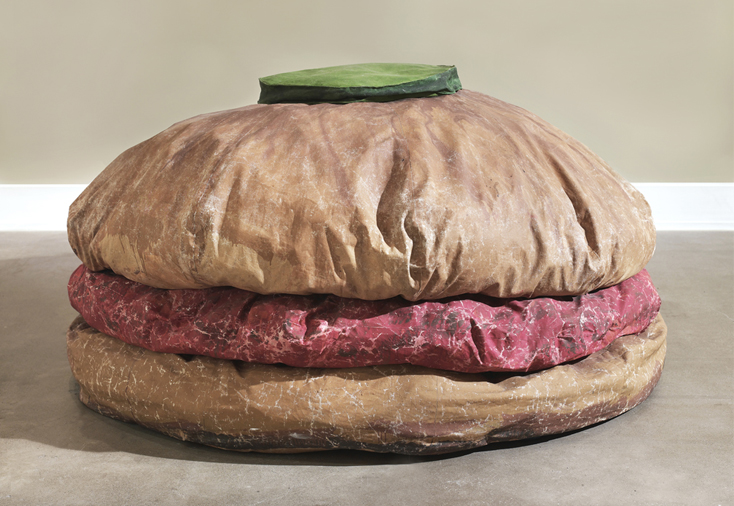Second grade observed and critiqued the work of the artist Claes Oldenburg in order to get the idea of what
colossal really means. Well, Claes Oldenburg knows how to do large! We have one of his sculpture here in Des Moines called
Crusoe Umbrella. It is a humongous umbrella that takes up an entire street corner. This sculpture was a perfect tie into the lesson because nearly every student had driven past it at some point.
 |
Crusoe Umbrella
By Claes Oldenburg
Nollen Plaza, Civic Center of Greater Des Moines, Des Moines, Iowa
Photo: Attilio Maranzano |
 |
Crusoe Umbrella
By Claes Oldenburg
Nollen Plaza, Civic Center of Greater Des Moines, Des Moines, Iowa
Photo: Attilio Maranzano |
We also looked at his soft sculptures like his Floor Burger, Floor Cake, Floor Cone, and Fries and Ketchup.



These soft sculptures inspired us to create some sculptures of our own. Since, this is the month of November we tried to create food items we were thankful for, keeping the meaning Thanksgiving in mind.
As you can see, Ice cream, pizza, and McDonald french fries were top on our lists. Yummy.
DAY 1:
We drew our food on a large sheet of paper, colored it, then cut out our shape with a second paper underneath; now have a front and back to our sculpture. Cutting two sheets guarantees that the front and back will match. For students that struggle with cutting out such huge pieces I used a binder clip to help hold papers in place or had a friend help hold them together as they cut.
Before we colored the backside we line-up our papers to be sure we colored the correct side. If you don't line up your paper, then fip, coloring might end up inside of the sculpture. Oh, no!
We then had to figure out what the back of our food would look like and color that side. (Example: pizza would show crust, compared to ice cream that might look the same as the front.)
BETWEEN ART TIMES:
In years past I had the kids sew their parts together, but this took too much time and several kids got pretty frustrated. Glue worked brilliantly, but a grown-up has to do the fastening.
Glue a thin line on of the very edge of the inside shape, being sure to leave a section unglued for later stuffing. Lay the layers together and let them dry. They tend to curl, so you may need to weigh them down.
When dried, the food will be nice pockets to stuff with crumpled newspaper.
DAY 2:
Students stuffed their foods with tiny bits of crumpled paper then I stapled it closed. Be careful not to over-stuff because they may tear.
Their sculptures turned out super cute and look fantastic for our Thanksgiving display.
Add-On:
For those that finished early or it can be used as a pre-worksheet.
































































